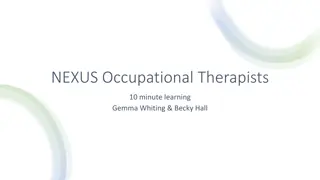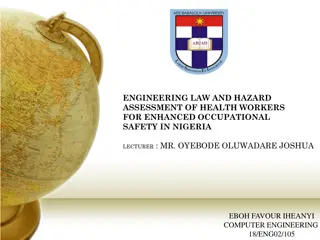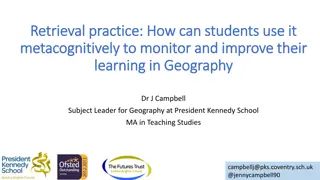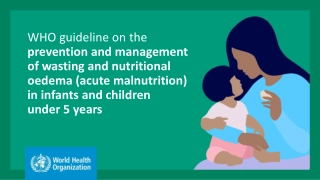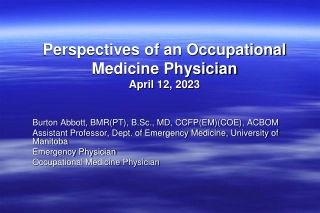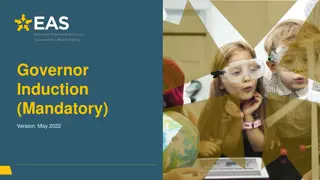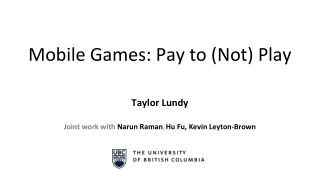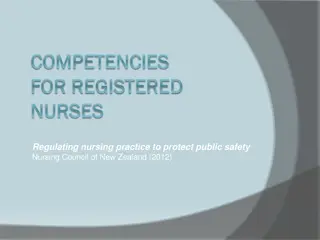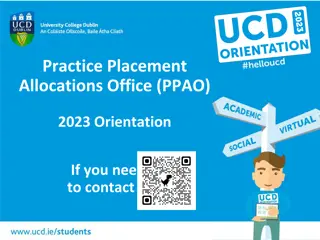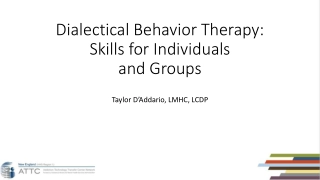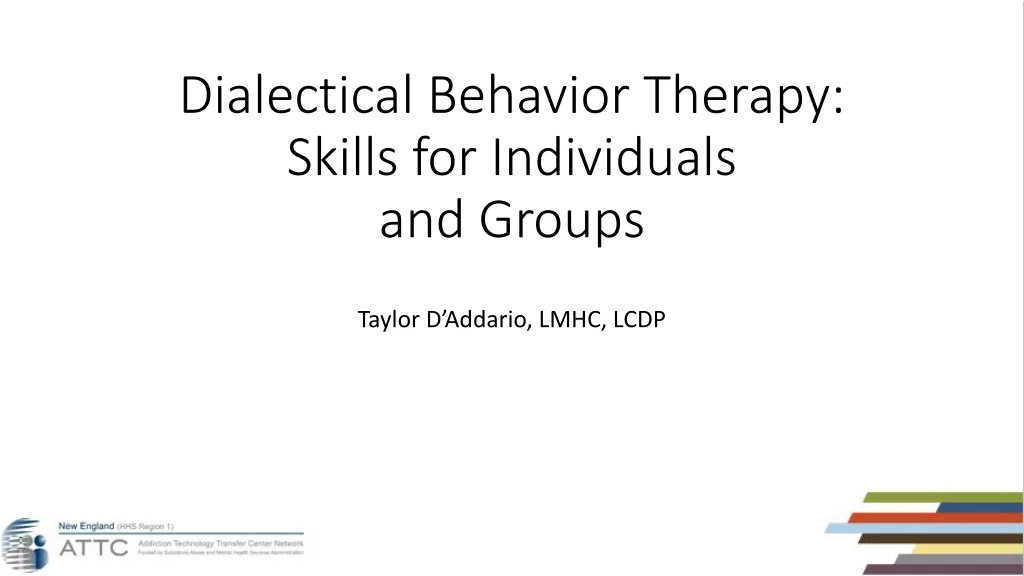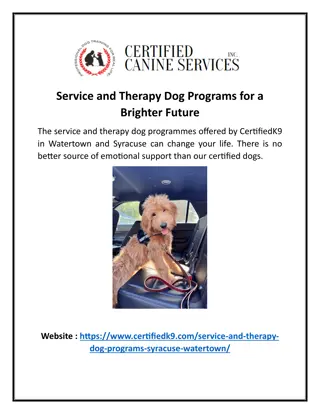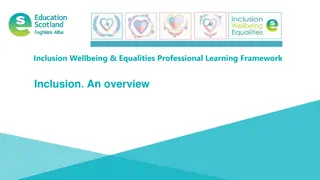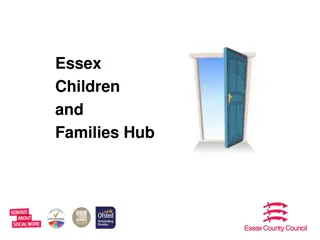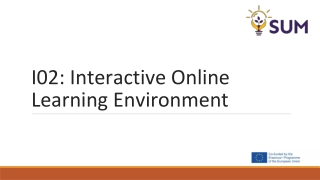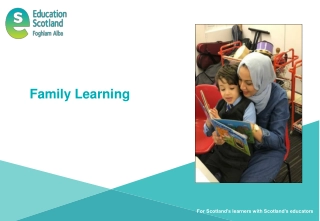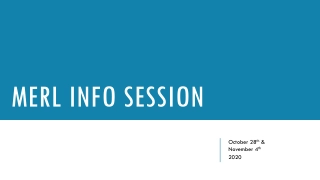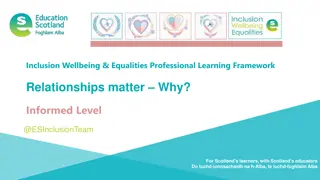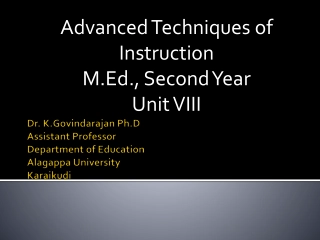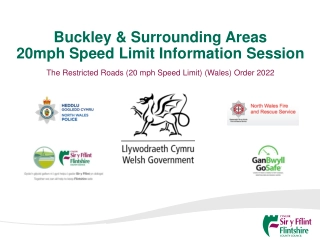Occupational Therapy and Play Practice Guideline Learning Session
Explore a comprehensive occupational therapy guideline focused on play practice for children and young people aged 0-18 in the UK. The guideline covers objectives, usage instructions, assessment, intervention recommendations, and more. Embrace evidence-based practices to enhance therapy outcomes and service quality.
Occupational Therapy and Play Practice Guideline Learning Session
PowerPoint presentation about 'Occupational Therapy and Play Practice Guideline Learning Session'. This presentation describes the topic on Explore a comprehensive occupational therapy guideline focused on play practice for children and young people aged 0-18 in the UK. The guideline covers objectives, usage instructions, assessment, intervention recommendations, and more. Embrace evidence-based practices to enhance therapy outcomes and service quality.. Download this presentation absolutely free.
Presentation Transcript
Occupational therapy and play Practice guideline Learning session
How to use this resource On your own as a self-reflection/learning tool As a learning session for your occupational therapy team or your multi- disciplinary team You can go through each slide or pick the sections that are relevant to you Some slides have more information in the notes section
Contents 1. Guideline objective 2. How to use the guideline 3. Goals and outcome recommendations 4. Assessment recommendations 5. Intervention recommendations 6. Further resources 7. Methodology information 8. Feedback
Guideline objective To describe the high-quality, contemporary evidence on the occupation of play and the use of play in occupational therapy assessment, intervention and as an outcome of therapy, to inform occupational therapy practice for those working with 0-18 year olds in the United Kingdom Back to Contents
How can I use the Occupational therapy and play practiceguideline? To support the use of play in your practice with children and young people through evidence-based recommendations To build a case for service quality improvements and resources To identify areas where you may need further development To identify research gaps Find the guideline on the RCOT website: https://www.rcot.co.uk/practice-resources/rcot-practice- guidelines Back to Contents
Recommendations Click on the recommendation category to find out more Goals and outcomes recommendations Assessment recommendations Intervention recommendations Click here for more information on the methodology behind the recommendations and the strength of each.
Goals and outcomes recommendations
Recommendation 1: Participation in play as a therapy goal and outcome It is recommendedthat play participation is recognised as an important goal and outcome of occupational therapy for children and young people. (Schaaf et al 2018 [A]; Kuhaneck et al 2020 [A]; Ramugondo et al 2018 [B]; Jasem et al 2020 [B]; Moore and Lynch 2018 [C] )
Recommendation 2: Eliciting the child and young person s perspective It is recommended that occupational therapists elicit the child and young person s perspective when play participation is identified as a therapy goal or outcome. (Rousseau-Harrison and Rochette 2013 [A])
Recommendation 3: Considering adults perspectives on play It is recommended that occupational therapists consider the influence of adults perspectives regarding children and young people s play participation when setting and evaluating intervention goals. (Engelen et al 2013 [A]; Crawford et al 2014 [B]; Sterman et al 2016 [B]; Jasem and Delport 2019 [B]; Sterman et al 2019 [B];Coussens et al 2020 [B]; Graham et al 2015 [C]; Rom n-Oyola et al 2018 [C])
Recommendation 4: Considering the social context of play It is recommended that occupational therapists consider the influence of the social context of play on children and young people s play participation when setting and evaluating intervention goals. (Wilkes-Gillan et al 2016 [A]; Kent et al 2021 [A]; Moore and Lynch 2015 [B]; Stagnitti et al 2012 [C])
Goals and outcomes recommendations summary Play participation is rarely a goal or outcome, despite its importance Occupational therapists need to consider the child s perspective and how intervention affects their experience of play Adults perspectives and the social context of play impact on play participation.
What does this mean for your practice? Think about your practice. Are you already implementing these recommendations or is there work to be done? What are the enablers and barriers to implementing these recommendations? Is play for play s sake a priority? Back to Back to Contents Recommendations overview
Recommendation 5: Psychometric properties and clinical and cultural context If using a standardised assessment of play, it is recommended that occupational therapists consider the psychometric properties of the measure and their suitability to the clinical presentation and cultural context of the child. (Romli and Wan Yunus 2020 [A])
Recommendation 6: Attendance and involvement of the child When assessing participation in play of 0-5 year olds, it is recommended that occupational therapists consider both the child s attendance (frequency of taking part) as well as the child s involvement (experience of taking part) in play. (Mobbs et al 2021 [B])
Recommendation 7: Impact of physical and social environments When assessing play, it is recommended that occupational therapists consider the impact of the physical environment (wheelchair use, play items and equipment) and the social environment (other people) on participation in play. (Engelen et al 2013 [A]; Rousseau-Harrison and Rochette 2013 [A]; Guerette et al 2013 [C]); Sonday and Gretschel 2016 [C])
Assessment recommendations summary When assessing play, it s important to consider the psychometric properties of the measure and the clinical and cultural context When assessing participation in play, consider the attendance and involvement of the child Consider the impact of the physical and social environments on participation in play
What does this mean for your practice? Think about your practice. Are you already implementing these recommendations or is there work to be done? What are the enablers and barriers to implementing these recommendations? Are assessments used to understand participation in play? Back to Back to Contents Recommendations overview
Intervention recommendations Interventions to support participation in play
Recommendation 8: ADHD and social play For children with attention deficit hyperactivity disorder (ADHD), it is recommended that occupational therapists consider structured interventions with peer-to-peer interactions to improve social play skills where social play is the goal of therapy. (Wilkes-Gillan et al 2016 [A])
Recommendation 9: ASD and play For children with autism spectrum disorder (ASD), it is recommended that interventions using imitation and/or modelling interventions can benefit play. (Kuhaneck et al 2019 [A])
Intervention recommendations Interventions that use play to cope with life situations
Recommendation 10: Hospitalised children and play to reduce stress For hospitalised children, it is recommended that occupational therapists promote play opportunities to reduce the stress of being in hospital. (Potatsz et al 2013 [A]; Mohammadi et al 2021 [A])
Intervention recommendations Interventions that use play to promote performance skills
Recommendation 11: Promoting positive mental health outcomes through play For children with intellectual impairments, developmental delays, and learning disabilities, it is recommended that occupational therapists promote positive mental health outcomes through activity-based interventions including play activities. (Arbesman et al 2013 [A])
Recommendation 12: Specific learning difficulty and play to improve executive function skills and behaviour regulation For children with a specific learning difficulty, it is recommended that occupational therapists consider group therapy-led peer play activities including practice play, symbolic play and games with rules to improve executive function skills and behaviour regulation. (Karamali Esmaili et al 2019 [A])
Recommendation 13: Poor mental health and play For children and young people with, and at risk of, poor mental health, it is recommended that occupational therapists use play-based interventions, particularly to increase social participation. (Cahill et al 2020 [A])
Recommendation 14: Use of gaming technology to develop performance skills It is recommended that occupational therapists consider the use of gaming technology, which is recognised as a meaningful occupation for children and young people, across a range of settings to develop performance skills such as motor skills, perception of motor ability and sensorimotor functioning. (Wuang et al 2011 [A]; Salem et al 2012 [A]; Hammond et al 2014 [A]; Bonney et al 2017 [A]; Axford et al 2018 [C])
Intervention recommendations summary Interventions can support participation in play, help children cope with stressful situations and promote performance skills.
What does this mean for your practice? Think about your practice. Are you already implementing these recommendations or is there work to be done? What are the enablers and barriers to implementing these recommendations? Are interventions focused on enabling participation in play? Back to Back to Contents Recommendations overview
Further resources Audit tool: audit your practice against the recommendations with your team Quick reference and implementation guide: a quick guide to the recommendations and tips for implementing them Find both at https://www.rcot.co.uk/practice-resources/rcot-practice- guidelines Back to Contents
Reflection tool The reflection tool allows you to capture your learning from this learning session and evidence your CPD for HCPC. Find the tool at https://www.rcot.co.uk/practice-resources/rcot-practice- guidelines Back to Contents
Methodology 2. Scope determined 3. Literature search 1. Guideline review group established 4. Screen findings 5. Critically appraise articles 6. Development of guideline recommendations 7. Peer review, stakeholder and parent consultation 9. Published by RCOT 2023 8. Final draft approved by RCOT Publications Group
Understanding recommendations strength and grading The 14 recommendations and 1 best practice suggestion are based on the evidence available within 34 critically appraised papers. Each recommendation is assigned: A strength scoring 1 or 2 (Strong or Conditional) A quality grading A, B, C or D (High, Moderate, Low or Very Low) Back to Back to Contents Recommendations
Thank you! Back to Contents



